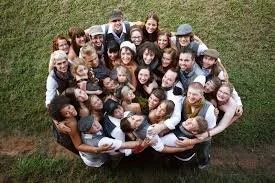More on Slogan #2, Some on Slogan #3
Dear All,
Slogan #2: Regard All Dharmas as Dreams
My list of quotations about dreams from last week did need some additional explanation, and I'm sorry for the confusion! Several readers have mentioned that it doesn't sit well with them to think of the world, other people, and so on, as dreams because that would make them unreal. It seems to be a demotion of everything from the real to the illusory. My apologies. So let me give the background that I left out last week.
All phenomena are real. Much realer in fact than they normally seem to be. Yet the slogan asks us to consider how all phenomena are like dreams. What's the point?
Like dreams, all things on earth are evanescent, shifting, and they are soon, as Emerson put it, "removed from our sight." Like a dream when we awaken, the impressive bridges, the massive mountain ranges, the sun itself that seems so steady in its glory, as well as our every experience and beloved person, will one day be gone. Or gone as we've known them and as we want them.
But change, evanescence, loss, brevity, do not exhaust the similarity of phenomena to dreams.
The most important point of similarity is that all phenomena, like dreams, are of the nature of ideas or concepts or meanings. The dream means something, or nothing, but it an experience in consciousness. This is like all other phenomena as well. Only someone with the concept of a chair sees a chair: otherwise they see a blob, or do not notice the thing at all. We see, experience, feel, only that for which we have concepts of some kind. A color or a feeling we cannot name and have never encountered before is still a that, a somewhat, with a certain kind of conceptual configuration. To meet nature in its grandeur, for instance, as Goethe learned to do, you have to go from seeing the world as objects outside yourself to reading the world and understanding it -- and so making it partly outside, partly inside yourself, the way dreams seem to be.
As experiences in consciousness, dreams are open for interpretation. All phenomena are like that, too. The apparent solidity of things, Thomas Aquinas noted, is only a preliminary way in which we inadequately perceive the overwhelming light of their truth. It is a logos-world or word-world, a world of intense, sacred meanings, not a world of things.
So to see the world as dream-like does not mean that phenomena are unreal, or merely creations of our own. It means that it is up to us to widen our receptivity and alertness and gradually understand the instreaming intuitions that are the universe more deeply, more playfully, with more wonder. And even learn to contribute our own expressive intuitions to this vast conversation that is reality. The things and beings of our normally-perceived world are not solid, but they are realer, in their nature as God's thoughts, than we can normally endure.
All this is supposed to help us wobble and lose our normal bearings -- on the way to an eventual tremendous solidity. It is supposed to help us become more compassionate people, who do not draw a cold line of demarcation between our own well-being and that of others. Otherness simultaneously melts and abides, as in a dream.
Soglan #3: Examine the Nature of Unborn Awareness.
OK. If it that wasn't hard enough, here comes another head-scratcher.
As we noticed above, once something is something for us -- a dream, a pain, a polar bear, a confusion, whatever -- it already is that. But what is the nature of awareness before it has become this or that? And how would we know?
The eye can see anything; its capacity to see is stronger than any color or shape it sees, yet this capacity has no color or shape. The soul can know and participate in anything, yet this capacity has no quality or shape and cannot be known in a fixed way. It is unborn: not yet this or that.
When I sense what I want to say, but can't find the words, I'm with the statement in its unborn state. When I first meet someone, for a split second we don't yet know how we each fit into the other's schema and our relationship is unborn.
When someone tells a good story, and you don't know where it's going, and you're eager to find out, and you're following along .... you're living into the unborn storyline. All the more so when you invent a story.
These are all hints and partial, but the slogan asks us to consider that open unbornness in its widest survey. Not to check out, not to disengage; rather, to engage clearly with life from out of a truly radical availability.
All blessings to all,
Michael




